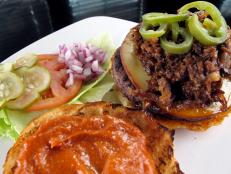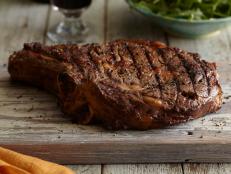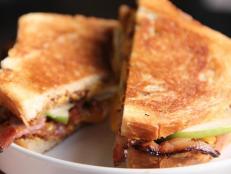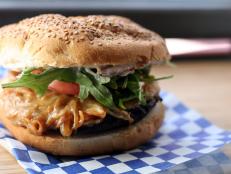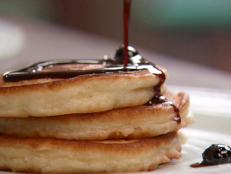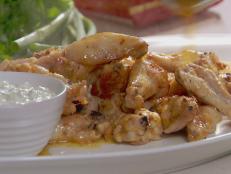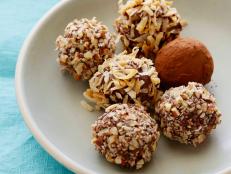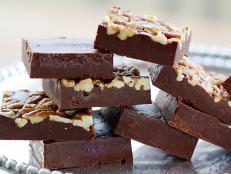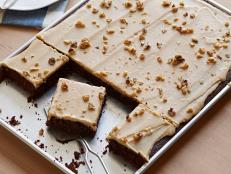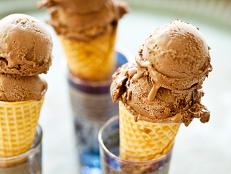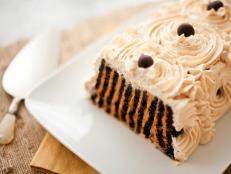The Grill Guide
Assume the role of grilling guru with the following tips for serving meats and veggies with a crispy char and a tasty wood-smoke edge.

Flames, food, festivity—what's not to love? Everything tastes better on the grill: not just meat, fish, chicken and turkey, but vegetables, fruit, even desserts. Assume the role of grilling guru with the following tips for serving meats and veggies with a crispy char and a tasty wood-smoke edge.
Basic Tools
Grilling tools don't have to be plentiful, fancy or decorative (a clever slogan apron is not a requirement). A basic grill kit should include:
- Long tongs – for turning the food
- Stiff-wire brush – for cleaning the grill
- Mop brush – for saucing foods
- Large offset spatula – for moving and flipping
- Elbow-length gloves – for protection
- Chimney – for igniting coals without lighter fluid
Fuel Sources
Non-gas grillers have several fuel choices, from briquettes and lump charcoals to hard woods and exotic fruit wood chips. Each brings a unique flavor and a distinctive heat. Here are a few:
- Lump charcoal – made from woods like hickory or mesquite, they burn hot and fast
- Convenient briquettes – burn at a more moderate rate and heat
- Wood chips – deliver a distinctive smoky flavor but relatively little heat (Note: They need to be pre-soaked in water)
Preparation
Oil the grate before heating the grill, either with a vegetable oil-dabbed kitchen towel or a brush — this keeps food from sticking.
Follow fueling instructions (either on charcoal bag or grill) and use lighter fluid or a chimney (recommended) to ignite the fuel.
Check the heat level by holding your hand about 5 inches above the grate — if you can hold it there for a second, it's very hot; 2 seconds, it's hot; 3 to 4, it's medium; any longer than that, it's probably low.
Hold the sauce: If you're basting meat with sugary sauces — like most barbecue sauces — do it at the very end of the process. The sugars tend to burn before the meat has cooked through.
Direct vs. Indirect
There are two major grilling styles: direct heat and indirect heat. Direct cooking is grilling directly over the heat — best for thin cuts of meat or vegetables and, of course, burgers. Indirect heat creates an oven-like environment (using a lid) in which only one side of the grill has heat, while the other half is where the food goes; this is best for larger cuts of meat that need long, slow heat, or foods (like pizza) that need to be seared then finished slowly.
Heat Zones
To keep your cooking options open, you'll want different levels of heat across different sections of the grill — this allows you to (a) crisp, sear or char over high heat, (b) slow-cook, (c)control flare-ups and (d) keep delicate items warm over lower heat. Using charcoal or wood chips, simply make both a high mound (for high heat) and a single layer (for low). With gas grills, you can just fiddle the knobs — high on one side, low on the other.
Mark of the Grill Master
Here's how to get those perfect "crosshatched" grill markings:
1. Very lightly oil the "up" or presentation side
2. Place it on a hot grill and cook until it lifts easily from the grate
3. Lift slightly and turn it 45 degrees right or left
4. Continue cooking until clear marks appear
5. Turn the food over and cook the other side
6. Follow the same procedure if you want marks on both sides
Better Brochettes
Skewers (or kebabs) make it easy to arrange individual portions of vegetables, mushrooms and meat that can go directly from the grill to the plate. Here are a few tips:
- When threading cubes of meat or vegetables onto the skewers, leave a little space between each item to allow the heat to circulate evenly.
- Use sprigs of fresh rosemary or mint to boost the flavor, orreplace the skewers with stalks of lemongrass or sugar cane. Sweet!
- Soak wooden skewers in water for 30 minutes before using — this keeps them from catching fire on the grill.
Cross-Contamination
Bacteria, salmonella and other unsavory contaminants associated with raw meat can really ruin a dinner party. To prevent cross-contamination:
- Never put cooked food back onto the same plate that carried it raw - lay raw meat, poultry or seafood on a piece of foil on the plate, and discard the foil once the food hits the grill.
- Don't use marinades as sauces unless they're boiled after the raw meat, poultry or seafood has been removed.
- If a marinade is used as a mopping sauce while grilling, make sure it's cooked for at least 3 minutes over high heat.
Common-Sense Safety
Food is the only thing that should get cooked during the grilling experience. Observe common-sense safety with the following hints:
- Avoid loose clothing, and make a habit of wearing flame-retardant oven mitts.
- Keep a fire extinguisher handy. A bucket of sand and a garden hose also work.
- To stop flare-ups, raise the grid and spread the coals out, or turn the gas down. Never use water to put out flames on a gas grill.
- Use baking soda to stop a grease fire.
- The typical LP cylinder holds approximately 20 pounds of propane. Do not overfill.
- Never attach or disconnect an LP cylinder, and never mess with gas fittings when the grill is on or hot.
- When lighting a gas grill, always keep the lid open to prevent gas buildup (can cause explosions).

